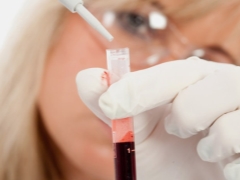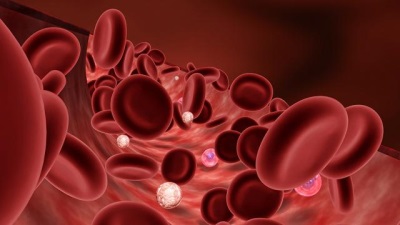The child lowered red blood cells
One of the most important results of a child’s blood test is the number of red blood cells. Low levels of these red blood cells are called erythropenia. It is caused by physiological causes, and various diseases. To understand whether a child with reduced red blood cells needs medical care, parents should know why red blood cells become smaller, how the red blood cells manifest themselves in children, and what should be done when such a problem is detected in a blood test.
What level of red blood cells is considered reduced
The lower limit of the normal number of red blood cells in the blood of a child of different ages is considered:
|
Have a newborn |
5 x 1012/ l |
|
Do babies from the 5th day of life |
4.5 x 1012/ l |
|
A child older than one year |
4 x 1012/ l |
If the child’s blood test is below such figures, this requires a more detailed examination to identify the reasons why red blood cells are not enough, as well as the appointment of the correct treatment.
Types of erythropenia
- Relative. Such a decrease in the number of red blood cells is also called false, because the number of cells is not reduced, and an underestimate is associated with blood thinning (for example, due to heavy drinking).
- Absolute. This type of erythropenia is due to the lack of red blood cells in the peripheral blood caused by their inadequate formation, accelerated destruction and other causes.
The reasons
A lower number of red blood cells than should be normal, is due to:
- Violation of the formation of red cells in the bone marrow. The lack of red blood cells in such cases may be associated with a deficiency of vitamins and minerals (this is often found with vitamin deficiencies and vegetarian food) or bone marrow damage with poisons, tumors, medications, radiation, and other factors.
- The destruction of red blood cells in the bloodstream. It can be provoked by chronic inflammation, infection, autoimmune reactions, poisoning, medication or other adverse effects on blood cells.
- Enhanced removal of red blood cells from the body of the child. The loss of red blood cells can be associated with bleeding from injuries, fractures or surgeries, as well as disorders of the kidneys or intestines, due to which red blood cells fall into the discharge.
A reduced number of red blood cells is found in such diseases:
- Iron-deficiency anemia.
- Hemoglobinopathies.
- Hereditary erythrocyte pathology.
- Leukemia
- B12 deficiency anemia.
- Hemolytic disease.
- Malignant tumors.
- Myxedema.
- Hemophilia.
- Pielo or glomerulonephritis.
- Diphtheria, whooping cough and other infections.
- Cirrhosis of the liver.
- Collagenoses.
- Chronic renal failure.
- Myeloma
- Ulcerative lesion of the digestive tract.
We recommend to watch the recording of the program of the famous doctor Evgeny Komarovsky, dedicated to the analysis of the child’s blood. You will learn in detail what the different indicators mean, including the level of red blood cells.
Symptoms
With a reduced number of red blood cells, the general condition of the child rarely remains normal. More often, the lack of red blood cells is manifested:
- Weakness
- Lethargy
- Drowsiness.
- Reduced appetite.
- Desire is inedible things (chalk, sand).
- The rapid onset of fatigue.
- Cool and moist to the touch skin.
- Reduced pressure blood.
- The temperature rises to 37-37.5 degrees.
- Pale skin tone.
- Brittle hair and dryness.
- Rapid pulse.
- Noise in the ears.
- Inhibited and slow action.
- Dizziness, and sometimes fainting.
- Decreased visual acuity.
- Frequent colds.
What is dangerous erythropenia for a child
The reduced number of red blood cells causes insufficient oxygen supply to the tissues, as well as a deterioration in the output of carbon dioxide from them.
The result will be a dysfunction of the internal organs, which in childhood is very dangerous and can cause a delay in development. Also, the child's immunity decreases and there may be problems with blood coagulation.
What to do
Since the most common cause of a decrease in the number of red blood cells is anemia, this pathology will be the first to be excluded or confirmed in a child with erythropenia.

Anisocytosis (different red blood cell diameter) and anisochromia (different red blood cell color) are also important in assessing the type of anemia.
Taking these and other parameters into account, the doctor will be able to set a diagnosis, after which he will give the child the necessary treatment. If erythropenia is a symptom of another disease, recovery of the number of red blood cells to normal levels is possible only with successful treatment.















